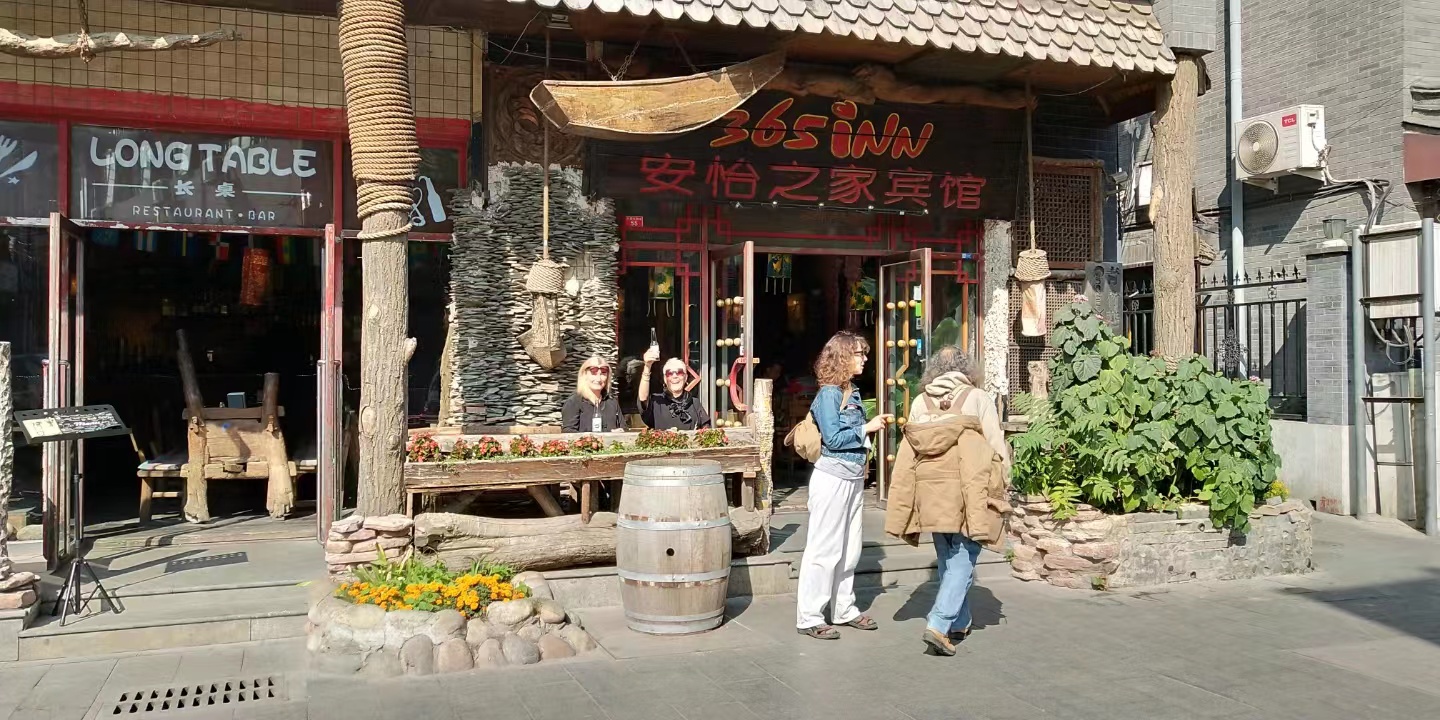White Dagoba Temple
The White Dagoba Temple is situated in the western section of the city. The White Dagoba in the temple is the twin of the one on Qionghua Islet in Beihai Park.
It was built in 1271, when the stone balustrades were added. The temple Shengshouwan' ansi (Temple of the Emperor's Longevity and Safety) was erected on the site in 1279 but was burned down by a fire in 1291. In 1457, the temple was replaced by a new name Miaoyingsi (Temple of Divine Retribution), which is the White Dagoba Temple of today.
The dagoba stands in the back of the temple, and has a base more than 30 meters in circumference. The upper part of the structure is like the tip of an auger with 13 rings, topped by a round, engraved copper plate, the edge of which is hung with iron bells. A small bronze pagoda is placed on the copper plate. During the renovation in 1978, several Buddhist precious cultural relics of the Qing Dynasty (1644-1911) were found inside the top of the dagoba.
The temple had been partly damaged and blocked from view since 1969 by houses built by residents nearby. Renovation of the 13-storey, 50.9-metre-high White Dagoba started in June 1997 and its first phase was completed in October 1998 with a budget of over 40 million yuan (USD 4. 8 million). As one of the most significant symbols of old Beijing, the White Dagoba Temple has been restored to its former appearance, and was reopened to the public on October 25, 1998. The dagoba was designed by a Nepalese engineer. He was then holding office in the Yuan government as a holy place for Buddhist rituals. Its building was one of the most important projects in the construction plan of Dadu (an old name for Beijing), which was drawn as the Capital by Kublal' Khan (1215-1294), the first Emperor of the Yuan Dynasty (1279-1368). The White Dagoba inside is the biggest and earliest remaining pagoda in the Tibetan Iamaist-style in China.
The temple, one of the first 18 places of historical value in Beijing, which was placed under state protection in 1961, was constructed between 1271 and 1279 with imperial edict from Kublai Khan, the founder of the Yuan Dynasty.
The second stage of the restoration of the White Dagoba Temple started in 2002. It is a landmark structure from the Yuan Dynasty (1279-1368) and was an important political and cultural centre of the dynasty. The relics are the only ones from the Yuan Dynasty that have been kept intact, free of any destruction.



